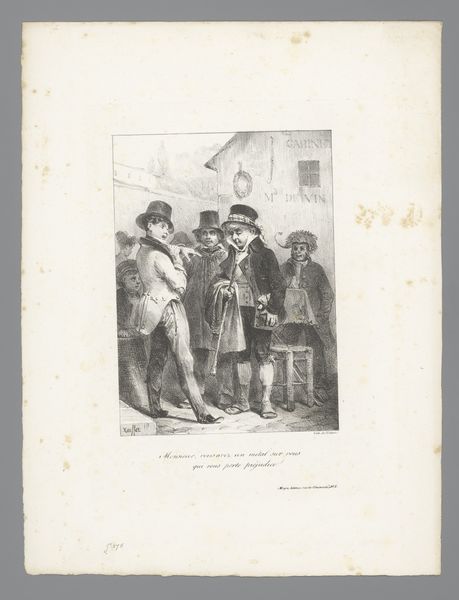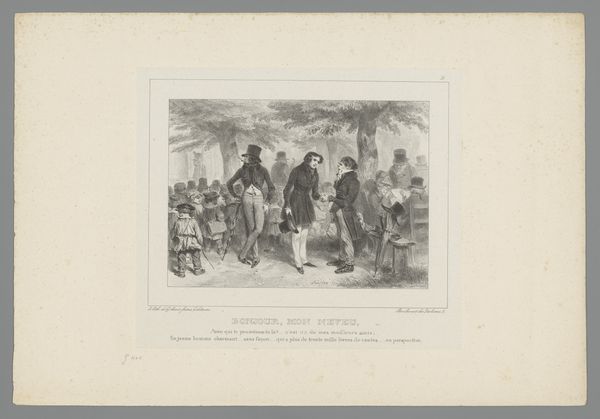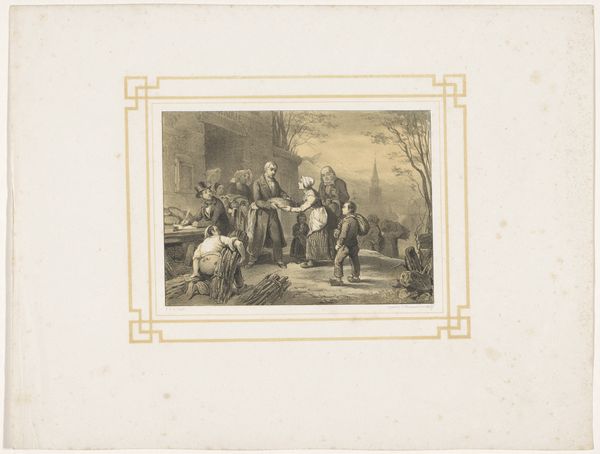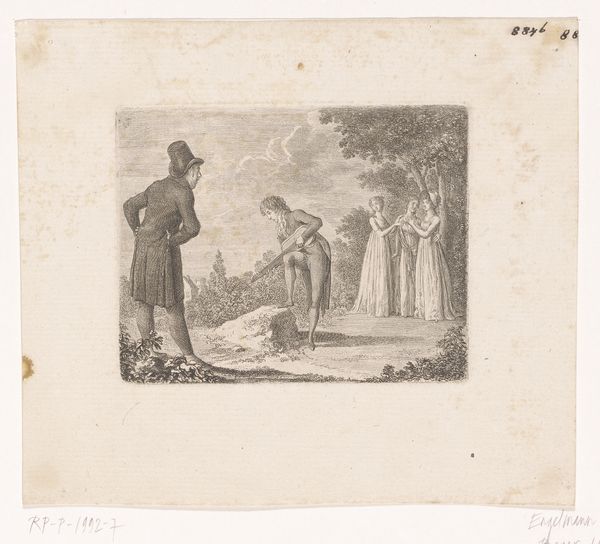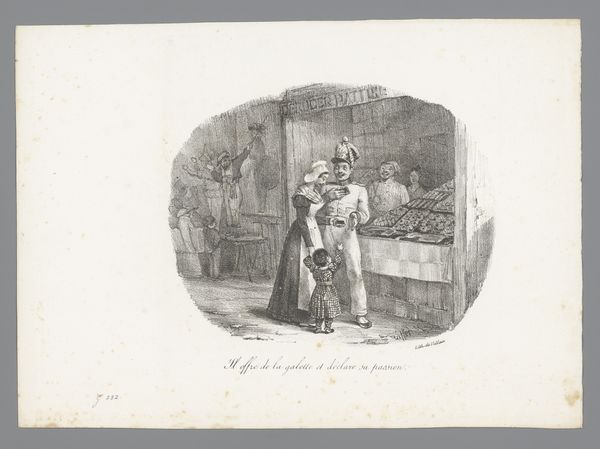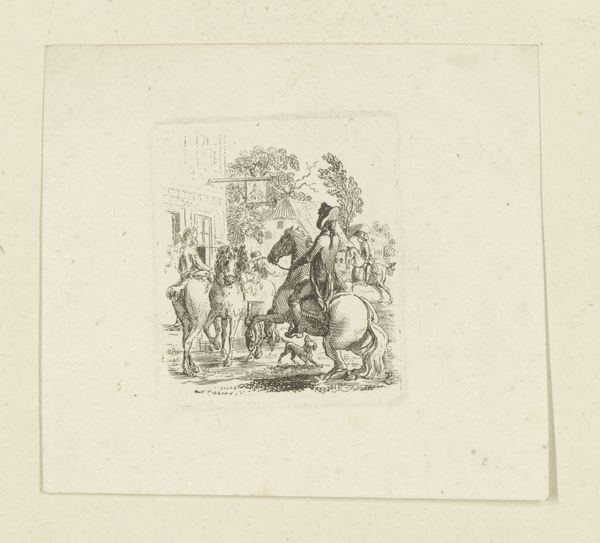
drawing, lithograph, print
#
portrait
#
drawing
#
narrative-art
#
lithograph
# print
#
figuration
#
historical fashion
#
group-portraits
#
romanticism
#
line
#
genre-painting
#
history-painting
Dimensions: height 225 mm, width 256 mm
Copyright: Rijks Museum: Open Domain
Curator: This lithograph, residing here at the Rijksmuseum, is titled “Jean-Jean neemt afscheid van de mensen om hem heen,” or “Jean-Jean Bids Farewell to the People Around Him” in English. Auguste Raffet created it between 1825 and 1829. Editor: My first impression is the pervasive somber mood despite it being a "farewell." The tight composition within the circle adds to a feeling of constriction. Curator: It does seem bittersweet. What stands out to me is Raffet's skill in capturing this transitional moment within French society. It evokes reflections on conscription, sacrifice, and community bonds in the face of war and social upheaval. It also asks us to examine concepts like nationhood, duty, and personal agency within the historical and political context of early 19th-century France. Editor: I'm struck by the composition: notice how the use of light and shadow directs our gaze towards the central figures. It emphasizes the play of emotions across the group and draws you into the intimate scene. The dynamism of the lines also lends a feeling of constant action, even here where everything is stilled. Curator: Consider, too, how Raffet engages with themes of Romanticism. He highlights not just historical events, but the personal and emotional consequences that stem from the Napoleonic Era’s profound effect on French society and gender roles, given it is predominantly women who bid farewell to the departing Jean-Jean. Editor: The historical elements certainly imbue it with complexity, layering the emotions in the piece. Viewing it with an emphasis on materiality also contributes: you almost feel as if you can touch the scene. Curator: Raffet invites us to connect Jean-Jean’s narrative with our contemporary understandings of social movements and identity, prompting questions about who is forced to leave and why, and how power dynamics influence those decisions. Editor: This focus allows one to read this drawing through an endless variety of lenses. Its impact resonates beyond historical depiction. Curator: Agreed, and its enduring relevance proves its significance as a reflection on society.
Comments
No comments
Be the first to comment and join the conversation on the ultimate creative platform.
